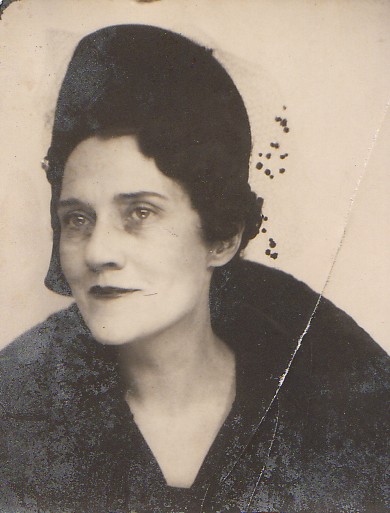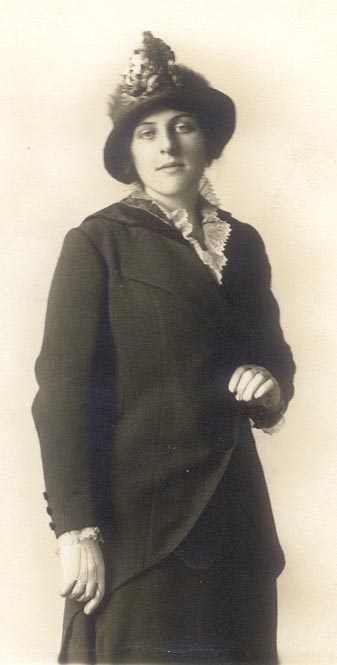In 1850, Nathaniel Hawthorne wrote
The Scarlet Letter, a work of historical fiction that has since been acclaimed as a classic and has been taught in many American schools. The story is set in 1642 in Massachusetts and focuses on the character of Hester Prynne, who has a child as a result of an adulterous affair and is sentenced to wear a scarlet-colored letter "A", to publicly denote her sin and her shame.
The character of Hester Prynne and many of the elements of the book are said to be based (loosely) on the life of
Mrs. Mary Batchelder, who was the fourth wife of Rev. Stephen Batchelder, my direct ancestor. Stephen moved to New England in 1632 and was a prominent pioneer and minister in what is new Massachusetts, New Hampshire and Maine. (I descend in 6 different ways - all on the Wadleigh side - from Stephen Batchelder, see below.) Stephen married his fourth wife, a widow named Mary Beedle, in 1650, when he was very old (probably in his 80's) and she much younger (perhaps in her 20's or 30's). In 1651, she was discovered to have had an affair with a man named George Rogers and to have become pregnant by him. In October 1651 in York, Maine, both were tried and convicted of adultery. Mary was sentenced to have 40 lashes and to be literally branded (probably on her forehead) with the letter "A". Her sentence was carried out about 6 weeks later, after she had given birth to her child.
At the time of the trial, both Stephen and Mary tried to obtain a divorce, but were denied one and were told to live together as husband and wife. Instead, Stephen fled to England and never returned. In 1656, Mary was finally granted a divorce by claiming that Stephen had taken another wife while in England. (Ironically, Stephen died a week or two later in England.) Mary later remarried and apparently led a respectable, married life.
Interestingly, in 1641 (long before his marriage to Mary and the subsequent adultery and trial) in Hampton, New Hampshire, Stephen ran into his own scandalous trouble. At that time, he was married to wife #3 (Helena) who was described as a "lusty, comely woman". Stephen apparently was not interested in his wife and instead solicited his neighbor's wife for sex. She refused and told her husband. Stephen then complained to the town magistrates that the woman and the husband were slandering him, but when the church got involved, he confessed. Stephen received no punishment, except to be excommunicated by the church. He was reinstated into the church a few years later.
Source:
http://www.hampton.lib.nh.us/hampton/biog/bachilerscarletletter.htm
I descend from Stephen Batchelder in 6 different ways, all through his first wife Ann. All 6 lines of descent from Stephen are on my father's side of the family, the Wadleighs. Specifically, my great-great-grandfather
Oscar Wadleigh is the descendant of all 6 of these lines.
My lines of descent from Stephen to me:
#1
Stephen Batchelder
Ann Batchelder
William Sanborn
William Sanborn
John Sanborn
Anna Sanborn
Mary Dearborn
James Wadleigh
James Wadleigh
John Wadleigh
John B. Wadleigh
Oscar S. Wadleigh
Odin F. Wadleigh
Paul C. Wadleigh
Randy Wadleigh
Ryan Wadleigh | #2
Stephen Batchelder
Ann Batchelder
William Sanborn
Mehitabel Sanborn
Samuel Tilton
Josiah Tilton
Josiah Tilton
Josiah Tilton
Jeremiah D. Tilton
Abigail R. Tilton
Oscar S. Wadleigh
(see #1) | #3
Stephen Batchelder
Theodate Batchelder
Mary Hussey
Mary Page
Bathsheba Robie
Joshua Lane
Sarah Lane
Ruth Stearns
Abigail S. Freese
Abigail R. Tilton
(see #2) |
#4
Stephen Batchelder
Nathaniel Batchelder
Nathaniel Batchelder
Samuel Batchelder
Mary Batchelder
Jeremiah Dearborn
Sarah Dearborn
Jeremiah D. Tilton
(see #2) | #5
Stephen Batchelder
Nathaniel Batchelder
Nathaniel Batchelder
Mercy Batchelder
Nathaniel Dearborn
Jeremiah Dearborn
(see #4) | #6
Stephen Batchelder
Nathaniel Batchelder
Nathaniel Batchelder
Nathaniel Batchelder
John Batchelder
Ruth Batchelder
Sarah Lane
(see #3) |




